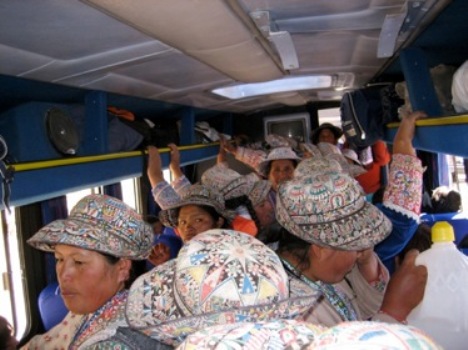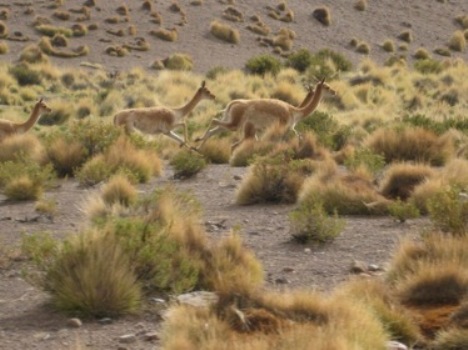Ramos Spaans: Spanish Language and Culture Courses
Spanish Language Courses and Introduction to Hispanic Culture. Ramos Spaans Language Institute operating in the Netherlands and Internationally. Lucy Ramos - our professional Spanish language teacher and experienced tour guide in Latin America provides valuable Spanish courses for Businesses, Individuals, Students, Children, and anybody willing to experience the opportunities of South America!
Thursday, October 27, 2016
Sunday, November 27, 2011
Tuesday, September 27, 2011
Machu Picchu, The Lost city of the Incas
"Machu Picchu, The Lost city of the Incas, is a mystical, sacred place. Touched by the clouds, the ruins are one of the most enigmatic and beautiful ancient ruins in the world.
Rediscovered on July 24, 1911 by Yale archaeologist Hiram Bingham,Machu Picchu (meaning 'Old Peak' in Quechua, the language spoken by the Incas) was thought to be a sanctuary for the preparation of priestesses and brides for the Inca nobility.
The dramatic setting in a remote area of the Peruvian Andes enhances the shroud of mystery even more. An absolute wonder of human heritage,Machu Picchu will touch your heart and soul in many ways."
"Invisible from below and high above the rumbling Urubama river Machu Picchu emits a sacred and spiritual energy. The first sight of Machu Picchu is breathtaking. The city appears to be a natural extension of the hillside. The palaces, temples, terraces, baths and some 150 houses, all in a remarkable state of preservation, are carefully arranged so that the function of the buildings matches the form of the surroundings. The natural slopes host agricultural terraces and aqueducts; the lower areas contain buildings occupied by farmers and teachers, and the most important religious areas are located at the crest of the hill, overlooking the lush Urubamba Valley thousands of feet below.
Although Machu Picchu was known to a handful of Quechua peasants who farmed the area, the outside world was unaware of its existence until the American historian Hiram Bingham stumbled on it almost by accident on July 24, 1911. Bingham was not looking for Machu Picchu, he was searching for the lost city of Vilcabamba, the last stronghold of the Incas and when some local Indians led him to Machu Picchu, he thought he had found it.
The site discovered in 1911 was very different to the one we see today. It was overgrown with thick vegetation and Bingham returned in 1912 and 1915 to clear the thick forest that had taken hostage of the Lost City of the Incas."
Monday, August 15, 2011
Latin American Economy Outlook
This year’s Outlook identifies why Latin America has done so much better than other regions during the crisis. Its countries were certainly tested – the region experienced a significant economic downturn in 2009 – but this time they were able to deploy policy in a way which was both effective and sustainable. Sustainability, which means implementing policies consistent with the long-run evolution of external, fiscal and monetary balances, was a critical difference. The region proved able to protect its hard-won gains in growth potential and so its scope for long-term economic development.
But there is an unresolved question about what lay behind this good result: was it internal factors like sound macroeconomic and microeconomic policy; or was it external ones, such as China’s economic emergence or timely multilateral action? Although this debate will not be conclusively settled in the near future, we will argue that both sets of factors played an important role. The crisis certainly revealed notable examples of good practices, but to work these also relied on the external environment.
There is room to improve macroeconomic policy
The conclusion is that there is no room for complacency. Global economic prospects remain highly uncertain. Although initial response to the crisis has depleted resources and reduced the scope for future action, there is still room for policy action on both the fiscal and monetary fronts. Combining this with citizens who now appreciate and acknowledge the fruits of sustainable macroeconomic policy brings the chance for the region to improve and further institutionalise structural macroeconomic policy.
This year’s macroeconomic overview looks first at the nature and scale of the negative shock that hit Latin America in 2009, and then at the external and internal factors that lay behind the region’s comparatively good performance. Armed with this, we turn to the options that policy makers have available today, including – in particular – the role that financial regulation might play.
Sunday, July 3, 2011
Welcome to Ramos Spaans Blog!
Welcome to the Spanish Courses with Ramos Spaans!
Latin America… A beautiful continent that has everything you could ever imagine…
Discover the unique Spanish courses together with Ramos Spaans!
- Spanish courses at different levels!
- Intensive and general Spanish lessons!
- On-site and Online Spanish Classes!
- Understanding of Spanish Culture and Business in South America!
- Travel recommendations and guides to South America!
- Learn Spanish with a native speaker!
- Spanish classes for individuals and groups!
- Your value for Money !
Visit http://www.engels.ramosspaans.nl/ for more information about our services!
Subscribe to:
Posts (Atom)
























